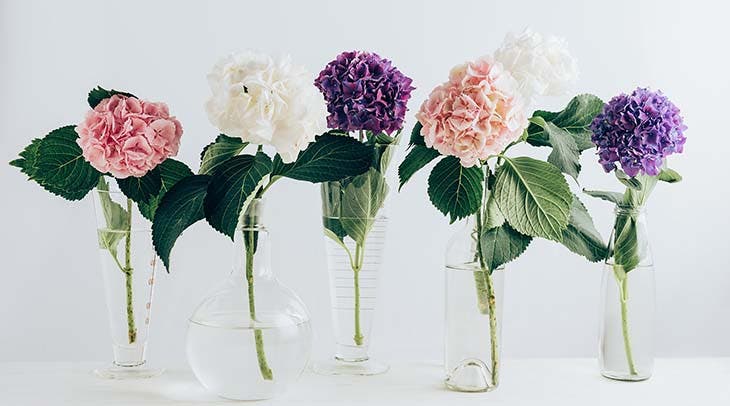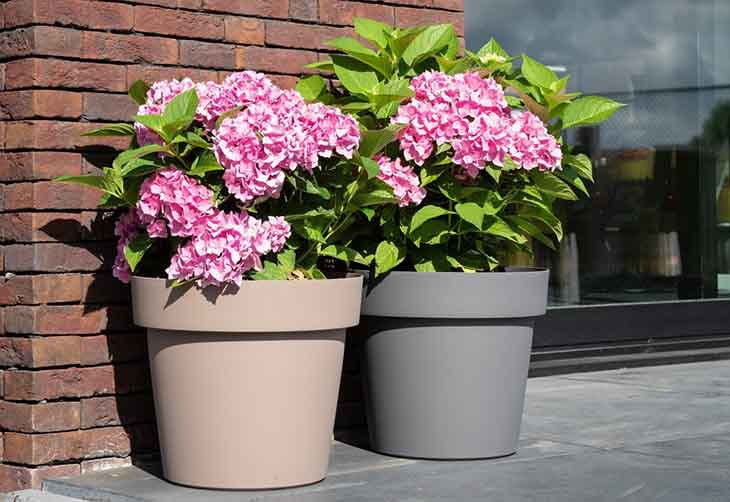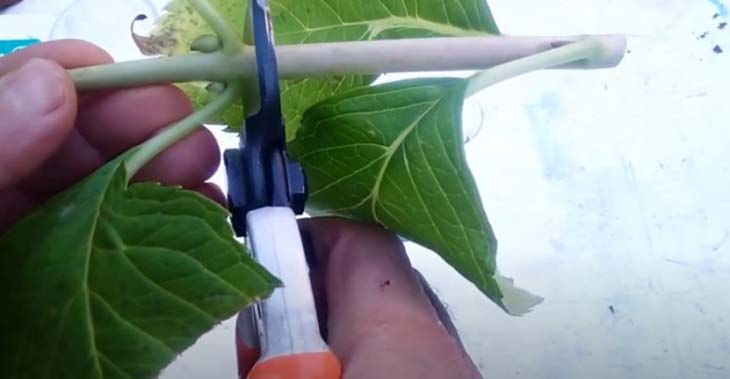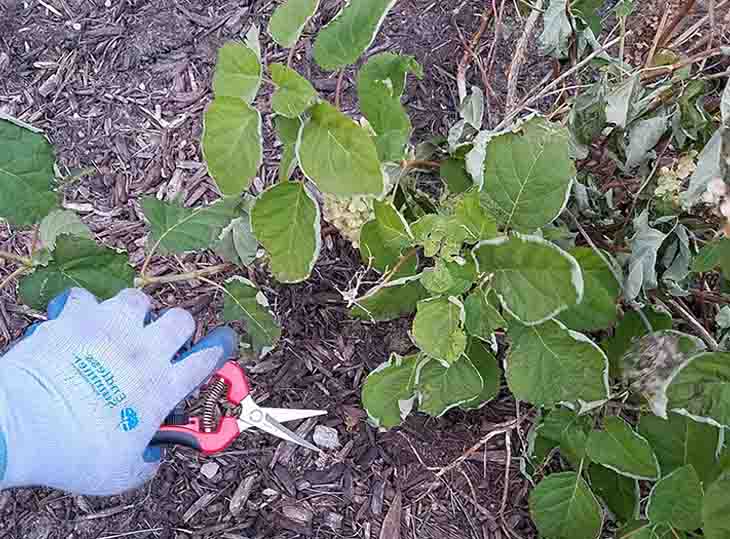It is arguably one of the most beautiful flowering shrubs you can have in the house, and there is no need to dedicate a garden or outdoor space to it.
With its bright colors, the hydrangea is a plant that lends itself well to growing in pots.
To get a beautiful plant, first choose the variety you like the most, and then determine the type of pot and soil that best suits your needs. There are certain types of hydrangeas that require a large pot. It is advisable to use clay or gravel for the soil, but not a saucer, as this can lead to excessive waterlogging.
Read Also: I don’t buy garlic in the store anymore. My gardener explained to me how to grow it in large quantities.

When you buy a hydrangea, the first thing you should do is find a nice place where it gets light, but also shade.
Like many other plants, the hydrangea does not like direct sunlight, but thrives in the light. A nice shady spot is ideal! Hydrangeas thrive well in acidic soils, i.e. in soils with a pH between 6.5 and 4.5.Their beautiful colors often depend on the acidity of the soil: the hydrangeas, which tend to be pink or maroon, prefer a high pH of 6 or even 7, while the hydrangeas, which tend to be blue, prefer a very acidic pH between 4 and 5. Depending on the color of your hydrangea, you should try to improve and change the soil.

In winter it does not cause much problems, but in summer you have to be careful with the heat, because this plant does not like high temperatures. If you choose to keep the plant indoors, you should keep it away from any heat source even in winter.
You will need a large pot with a diameter of at least 40 cm and put expanded clay in the soil.
Then you can remove the plant from the pot. You will notice that it has thick roots. Cut off the roots before placing the plant in its new pot!
This step is very important, otherwise the plant will have difficulty spreading its roots and will quickly perish. Do not place the plant too deep, but a few inches above the ground (to prevent the roots from rotting during watering).
The first watering should be sufficient, then you need to adjust it depending on the season. In summer, to combat the heat, plan to water once a day. However, be careful not to water the leaves to avoid fungal diseases that could affect your plants.
The first knot to be cut if you want to make a hydrangea pruning.

For fertilization, a liquid fertilizer is recommended, which is added to the irrigation water at least once a week.
Cultivation, on the other hand, is done by cuttings and is quite simple.
How to take cuttings?
Cuttings can be taken from herbaceous plants during the plant’s fresh green growth (not in flowering) between June and August, or during the dormant period between October and December.
In this case, a semi-lignified cut must be made.
In summer, do the following: cut the bud to a height of about 30 cm, then cut back the bud as soon as you recognize the first node (where the two leaves grow at the bottom); Remove these two leaves as well and collect all the others with one hand so that you can cut off the top of the remaining leaves. At this stage, your sprout should look something like this and can be placed in a glass with 2-3 cm of water:
Read Also:How do you grow and care for the Christmas rose?

Here are some tips on how to better root your cuttings:
Don’t forget to change the water every two days (and replace the aspirin as well) for at least 40 days. After a few months, you will notice that small roots are forming; then it’s time to prepare a pot. Always remember that cuttings produce a plant that resembles the mother plant.
Read Also:What are the ideal plants for your garden in September?

